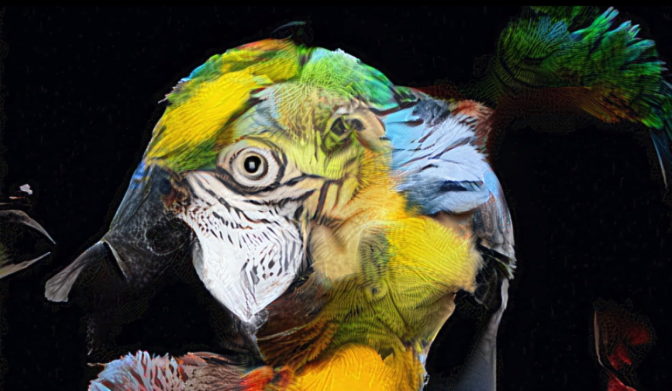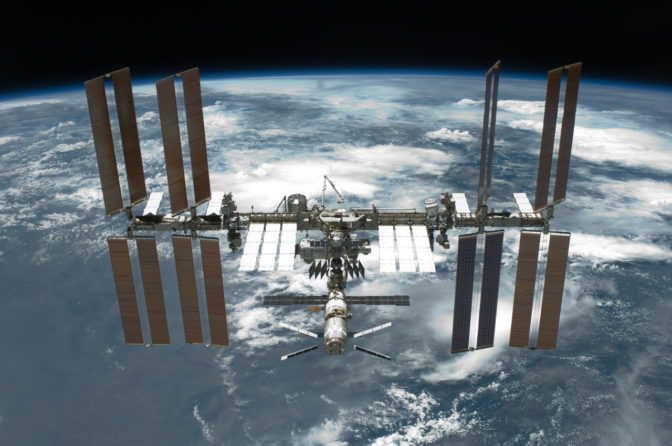You may have used AI in your smartphone or smart speaker, but have you seen how it comes alive in an artist’s brush stroke, how it animates artificial limbs or assists astronauts in Earth’s orbit?
The latest video in the “I Am AI” series — the annual scene setter for the keynote at NVIDIA’s GTC — invites viewers on a journey through more than a dozen ways this new and powerful form of computing is expanding horizons.
Perhaps your smart speaker woke you up this morning to music from a distant radio station. Maybe you used AI in your smartphone to translate a foreign phrase in a book you’re reading.
A View of What’s to Come
These everyday use cases are becoming almost commonplace. Meanwhile, the frontiers of AI are extending to advance more critical needs.
In healthcare, the Bionic Vision Lab at UC Santa Barbara uses deep learning and virtual prototyping on NVIDIA GPUs to develop models of artificial eyes. They let researchers explore the potential and limits of a design for artificial eyes by viewing a model through a virtual-reality headset.
At Canada’s University of Waterloo, researchers are using AI to develop autonomous controls for exoskeleton legs that help users walk, climb stairs and avoid obstacles. Wearable cameras filter video through AI models trained on NVIDIA GPUs to recognize surrounding features such as stairs and doorways and then determine the best movements to take.
“Similar to autonomous cars that drive themselves, we’re designing autonomous exoskeletons that walk for themselves,” Brokoslaw Laschowski, a lead researcher on the ExoNet project, said in a recent blog.
Watch New Worlds Come to Life
In “I Am AI,” we meet Sofia Crespo who calls herself a generative artist. She blends and morphs images of jellyfish, corals and insects in videos that celebrate the diversity of life, using an emerging form of AI called generative adversarial networks and neural network models like GPT-2.

“Can we use these technologies to dream up new biodiversities that don’t exist? What would these creatures look like?” she asks in a separate video describing her work.
See How AI Guards Ocean Life
“I Am AI” travels to Hawaii, Morocco, the Seychelles and the U.K., where machine learning is on the job protecting marine life from very real threats.
In Africa, the ATLAN Space project uses a fleet of autonomous drones with AI-powered computer vision to detect illegal fishing and ships dumping oil into the sea.
On the other side of the planet, the Maui dolphin is on the brink of extinction, with only 63 adults in the latest count. A nonprofit called MAUI63 uses AI in drones to identify individuals by their fin markings, tracking their movements so policy makers can take steps such as creating marine sanctuaries to protect them.
Taking the Planet’s Temperature
AI is also at work developing the big picture in planet ecology.
The video spotlights the Plymouth Marine Laboratory in the UK, where researchers use an NVIDIA DGX system to analyze data gathered on the state of our oceans. Their work contributes to the U.N. Sustainable Development Goals and other efforts to monitor the health of the seas.
A team of Stanford researchers is using AI to track wildfire risks. The video provides a snapshot of their work opening doors to deeper understandings of how ecosystems are affected by changes in water availability and climate.
Beam Me Up, NASA
The sky’s the limit with the Spaceborne Computer-2, a supercharged system made by Hewlett Packard Enterprise now installed in the International Space Station. It packs NVIDIA GPUs that astronauts use to monitor their health in real time and track objects in space and on Earth like a cosmic traffic copter.

One of the coolest things about Spaceborne Computer-2 is you can suggest an experiment to run on it. HPE and NASA extended an open invitation for proposals, so Earth-bound scientists can expand the use of AI in space.
If these examples don’t blow the roof off your image of where machine learning might go next, check out the full “I Am AI” video below. It includes several more examples of other AI projects in art, science and beyond.
